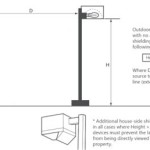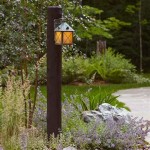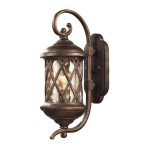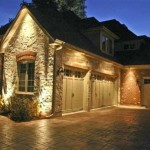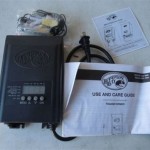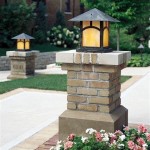How to Make Your Outdoor Wood Boiler More Efficient
Outdoor wood boilers offer a cost-effective and sustainable heating solution for many homeowners, especially those with access to a readily available supply of wood. However, achieving optimal efficiency is crucial to maximize fuel savings, reduce emissions, and prolong the lifespan of the boiler itself. Inefficient operation leads to excessive wood consumption, increased creosote buildup, and potential environmental concerns. Improving the efficiency of an outdoor wood boiler involves a multifaceted approach, encompassing proper installation, consistent maintenance, and informed operating practices. This article will delve into various strategies to enhance the performance and efficiency of your outdoor wood boiler system.
Proper Installation and Sizing
The foundation of an efficient outdoor wood boiler system lies in proper installation and accurate sizing. A boiler that is too large for the heating demand will cycle frequently, leading to incomplete combustion and wasted fuel. Conversely, an undersized boiler will struggle to maintain the desired temperature, resulting in continuous operation and potential overheating. Therefore, a comprehensive heat loss calculation is essential before selecting a boiler. This calculation considers factors such as the square footage of the building, insulation levels, window efficiency, and climate to determine the optimal BTU (British Thermal Unit) output required.
Furthermore, the installation process must adhere to manufacturer specifications and local building codes. Improper venting, inadequate insulation of supply and return lines, and incorrect plumbing configurations can significantly reduce efficiency. Venting systems should be properly sized and installed to ensure adequate draft and prevent backdrafting. Insulating all exposed pipes and the boiler itself minimizes heat loss to the surrounding environment, maximizing the amount of heat delivered to the building. Ensuring that the boiler is level and placed on a stable, non-combustible surface is also crucial for safe and efficient operation. A professional HVAC technician with experience in outdoor wood boiler installations should be consulted to ensure that all aspects of the installation are performed correctly.
Finally, consider the placement of the boiler itself. Positioning it in a location that minimizes exposure to wind and weather can reduce heat loss. A sheltered area, such as a shed or dedicated enclosure, can provide added protection and improve efficiency. However, adequate ventilation is still essential to prevent the buildup of carbon monoxide and ensure proper combustion.
Fuel Management and Wood Selection
The type and quality of wood used in an outdoor wood boiler directly impact its efficiency. Burning unseasoned or wet wood requires a significant amount of energy to evaporate the moisture content before combustion can occur. This reduces the overall heat output and increases the production of smoke and creosote. Seasoned wood, on the other hand, has a lower moisture content, allowing for more efficient combustion and cleaner burning.
Seasoning wood typically involves splitting it into manageable pieces and stacking it in a well-ventilated area for at least six months, and preferably longer. The ideal moisture content for burning wood is between 15% and 20%. A moisture meter can be used to accurately measure the moisture content of the wood. Different types of wood also have varying heat values. Hardwoods, such as oak, maple, and beech, generally have higher heat values than softwoods, such as pine and fir. Using a mix of hardwoods and softwoods can provide a balanced approach, with hardwoods providing sustained heat and softwoods igniting quickly.
Proper wood storage is also crucial. Stacking wood off the ground on pallets or skids allows for air circulation and prevents moisture from being absorbed from the ground. Covering the top of the wood pile with a tarp or shed roof can protect it from rain and snow. Avoid storing wood directly against walls or in enclosed spaces, as this can trap moisture and promote rot. Consistent monitoring of the wood supply and proper seasoning practices are essential for maximizing fuel efficiency.
Implementing Efficient Operating Practices
Beyond installation and fuel management, adopting efficient operating practices is crucial for maximizing the performance of an outdoor wood boiler. Regular maintenance, proper loading techniques, and optimized combustion settings can significantly improve efficiency and reduce emissions. One key aspect is consistent cleaning of the firebox and heat exchanger. Ash buildup can insulate the heating surfaces, reducing the transfer of heat to the water jacket. Creosote buildup in the chimney can also restrict airflow and increase the risk of chimney fires.
The frequency of cleaning depends on the type of wood burned and the operating conditions, but a general guideline is to clean the firebox and heat exchanger every few weeks during the heating season. The chimney should be inspected and cleaned at least once a year, and more frequently if necessary. Another important practice is to load the firebox properly. Avoid overloading the firebox, as this can restrict airflow and lead to incomplete combustion. Smaller, more frequent loads are generally more efficient than large, infrequent loads. Arrange the wood in a manner that allows for good airflow around the logs.
Many modern outdoor wood boilers are equipped with advanced combustion controls, such as oxygen sensors and programmable thermostats. Utilizing these features effectively can optimize combustion and minimize fuel consumption. Experiment with different settings to find the optimal balance between heat output and efficiency. Regularly monitor the water temperature and adjust the thermostat accordingly to avoid overheating. Consider installing a thermal storage tank to store excess heat produced during peak burning periods. This stored heat can then be used to supplement the boiler during periods of low demand, reducing the need for frequent firing. Finally, minimizing standby losses is crucial. When the boiler is not actively heating the building, it continues to lose heat to the surrounding environment. Insulating the boiler properly and reducing the water temperature during off-peak hours can minimize these losses.
Water Treatment and System Maintenance
Maintaining the water quality within the outdoor wood boiler system is critical for preventing corrosion, scaling, and other issues that can reduce efficiency and damage the boiler. Untreated water can lead to the buildup of mineral deposits on the heat exchanger surfaces, reducing heat transfer and increasing fuel consumption. Corrosion can also weaken the metal components of the boiler and piping, leading to leaks and premature failure. Regular water testing and treatment are essential to maintain optimal water quality.
Water testing involves measuring parameters such as pH, alkalinity, hardness, and total dissolved solids. Based on the test results, appropriate water treatment chemicals can be added to the system to adjust the pH, prevent scaling, and inhibit corrosion. A qualified water treatment specialist can provide recommendations on the best treatment chemicals and dosage rates for your specific water conditions. In addition to water treatment, regular system maintenance is crucial. Inspect all piping and fittings for leaks and repair any leaks promptly. Check the circulation pumps to ensure they are operating properly and replace them if necessary. Bleed air from the system regularly to maintain proper water flow. Inspect the expansion tank and pressure relief valve to ensure they are functioning correctly. These components play a critical role in maintaining the system pressure and preventing damage from overpressure.
Furthermore, consider the use of antifreeze in the system, especially in climates with freezing temperatures. While antifreeze can protect the system from freeze damage, it can also reduce heat transfer efficiency. Choose an appropriate type of antifreeze that is compatible with the boiler materials and has a high specific heat capacity. Regularly check the antifreeze concentration and add more as needed to maintain adequate freeze protection. By implementing a comprehensive water treatment and system maintenance program, you can prolong the lifespan of your outdoor wood boiler and ensure its continued efficient operation. A well-maintained system is less prone to breakdowns and requires less frequent repairs, saving you time and money in the long run.

Let S Learn How To Make Your Outdoor Wood Furnace More Efficient

The Alliance For Green Heat Outdoor Boilers

Wood Gasification Maine Organic Farmers And Gardeners

Outdoor Wood Boiler

Best Outdoor Wood Furnace Central Boiler

The Key To Burning Wood Cleanly And Efficiently
My Outdoor Wood Boiler Build Hearth Com Forums Home

Welcome To The Boiler Basics Heatmasterss

Outdoor Furnaces And Boilers Crown Royal Stoves

Homemade Wood Boiler Plans Complete Step By Guide
Related Posts
